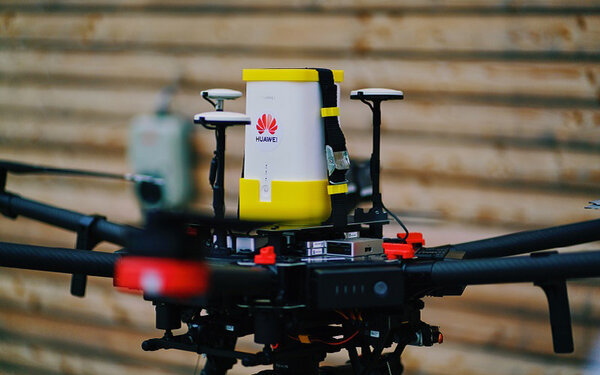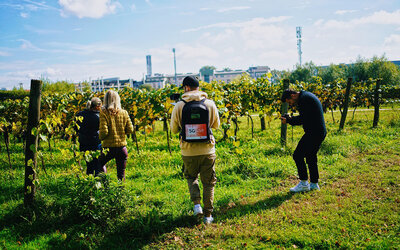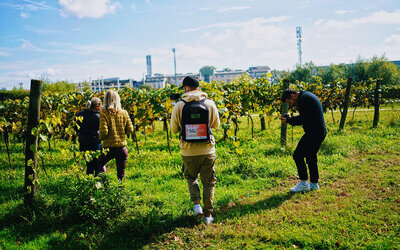At the Nussböckgut vineyard, a centuries-old estate in Upper Austria that was first mentioned in a document in 1323, the two companies provided an update on their pioneer project that started last year, and introduced how their 5G and IoT technologies can advance sustainability in agriculture. The two companies also hosted a panel made up of digitalization and agriculture experts discussing how technology innovation, and 5G particularly, can promote sustainable farming amid rising global concerns for food security.
The two companies announced that their collaboration is entering the second phase called “Digital Sky”. Huawei will provide cloud computing services on top of 5G, which will serve as the foundation for real-time artificial intelligence (AI) analysis. Meanwhile, equipped with high-resolution cameras and sensors, Dronetech’s drones will survey the land and objects, to capture images and data that will be processed by AI, and provide actionable findings to the users instantly.
The technology helps farmers detect small insects, monitor crop status and predict harvests, allowing them to optimize the use of water, chemicals and pesticides precisely, and with minimum waste.
In the second phase, the project also plans to develop a shared economy approach for drone services. Users from different sectors, including farmers, municipalities, corporates or individuals could rent the drones and their AI solutions for a wide range of applications, such as inspection of solar panels, traffic management, or power lines wear-out detection.
“The project of Huawei and Dronetech with drone use in asparagus and winegrowing is the first in Austria and here we want to analyse plant growth with real-time image recognition. By doing so, we want to improve the harvest, the output and the quality of the products,” explains Andreas Reichhardt, Director-General of Directorate-General VI – Telecommunications, Postal Services and Mining at the Austrian Ministry of Finance. “We want to use the opportunities of the digital transformation, for this we need an optimal infrastructure, here the focus is in the area of 5G.”
The biggest challenge for introducing 5G-enabled drones to agriculture is network coverage. Currently, 5G networks are primarily designed for end-user who are mostly at ground level or indoors. High-quality coverage for drones, which routinely fly 50 meters above ground, still needs to be developed.
Erich Manzer, Deputy CEO of Huawei Austria, said: “5G was developed for three key application areas: For high bandwidth, low latency and to connect millions of devices. Using drones in combination with AI and 5G can solve many resource-intensive operations such as maintenance or area monitoring.”
David Hopf, CEO of Dronetech, noted: “AI-powered drones are important enablers for the sustainable future of agriculture. Partnered with Huawei, we developed a solution that can not only massively reduce the use of pesticides and fertilizers, but also enhance farming efficiency and cut labor costs. This helps our food supply chains to be more sustainable.”
Learn more: https://www.huawei.com/en/sustainability/the-latest/events/5g-smart-farming-tour
Image captions:


